Wayfinding > wayshowing
This is a review of the renewed edition of Wayshowing 2005, Wayshowing > Wayfinding Basic & Interactive, by Per Mollerup.
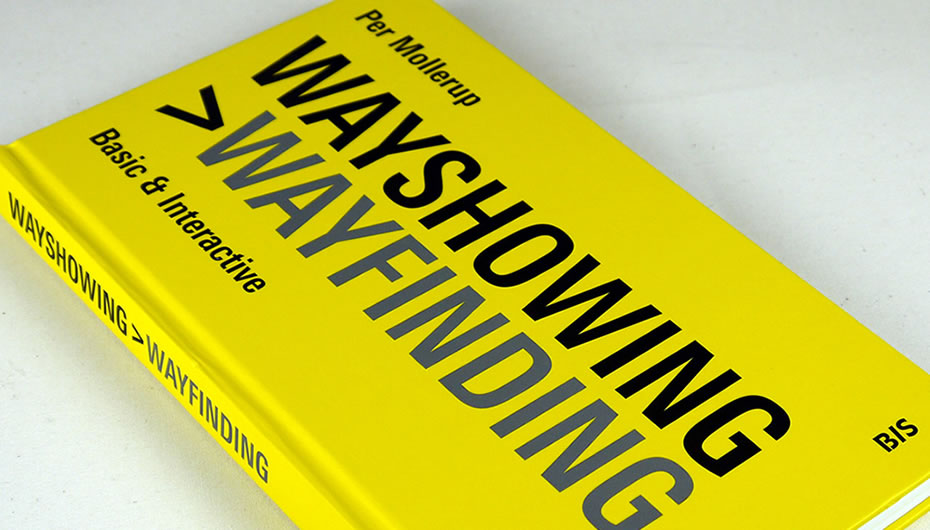
The first edition was sold out for a long time and was considered as the industry reference book for everything wayshowing, wayfinding and signs related.
About Per Mollerup
Wayshowing > Wayfinding is written by Per Mollerup (1942), a Danish Designer and Professor of Communication Design who has designed numerous wayshowing and branding projects for airports, transit, culture institutions and more. His design studio Designlab closed in 2009, and Mollerup currently is a professor at Swinburne University of Technology, Melbourne. Dr. Per Mollerup still works with consulting concerning branding and wayshowing— and he has defined industry standards strategies for wayfinding and wayshowing.
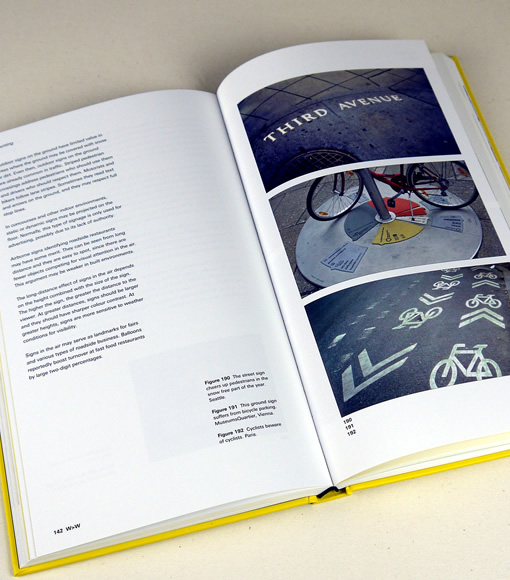
Design principles according to Mollerup “Research is search for knowledge. Design research, search for knowledge about design are part of all professional design work.”
Introduction to W>W
Wayshowing > Wayfinding is divided into three main parts, that describes wayfinding problems, principles and practices. The books principles have been revised and updated with digital signage principles.
The first part of the book describes the basic principles of wayfinding, Signage without signs. Finding and identifying places and the way through natural, intuitive elements. The second part of the book describes wayfinding as ‘A problem solving process’. Mollerup then explains about the principles of wayshowing. The third part of the book covers 25 new showcases including airports, rail, city, culture and more.
Wayfinding
The term wayfinding introduced by Kevin Lynch in book Image of the City (1960), where he described wayfinding as “a consistent use and organization of definite sensory cues from the external environment”. In 1992 Arthur and Passini published the book Wayfinding-People, Signs, and Architecture. Arthur & Passini extended the concept of the term wayfinding by relating it to architecture and signage— and described the essential principles for wayfinding.
In the book W>W Per Mollerup builds upon this knowledge, introducing a three step iterative wayfinding process; “Search, Decision, Motion”.
The chapters about wayshowing > wayfinding describe the research steps for planning and defining a wayfinding strategy. The nine described wayfinding strategies reflect environmental conditions, user needs, cognitive behavior and wayfinding practice.
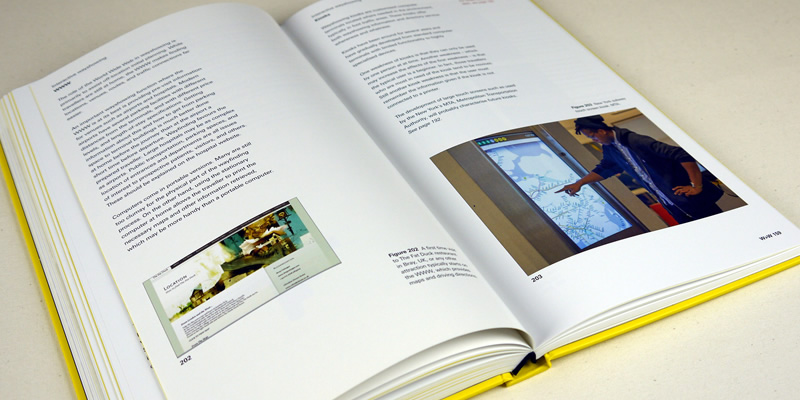
Wayshowing
Wayshowing facilitate the wayfinding strategies as described in the first chapters of the book. Mollerup describes the characteristics of wayshowing and shows examples of its use.
For all wayshowing projects, Mollerup suggests a balance between two contrasting principles. Simplicity vs redundancy. These chapters describes the functional goals of simplicity and how redundancy can lead to less noise, errors or misunderstanding.
Sign functions, contents and form
After theoretical chapters W>W describes sign functions, contents and form. Everything you want to know related to identification, direction, description and regulation is described, these chapters will give insight on how to design for a wayshowing project. These chapters also offer many examples on legibility, color contrast, typography, pictograms, arrows and more. The content in these chapters are updated from the previous version with new content about performance, digital signage and wayfinding insights.
Interactive wayshowing
New chapters include Interactive Wayshowing. In the increasingly changing world, digital tools are used more and more for wayfinding purposes. The new chapters describe the digital spectrum and how digital tools can work efficiently in a wayshowing scheme.
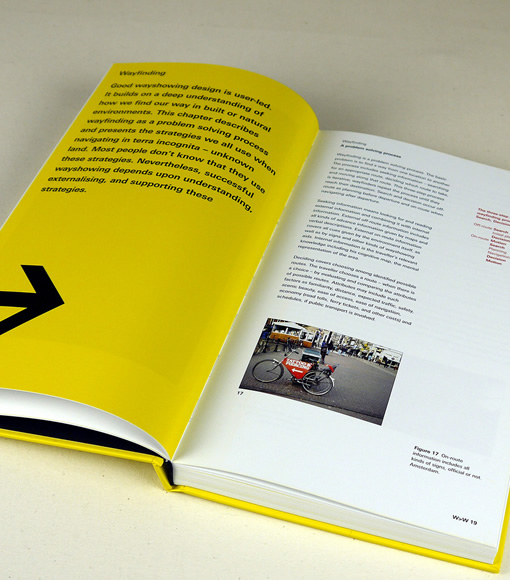
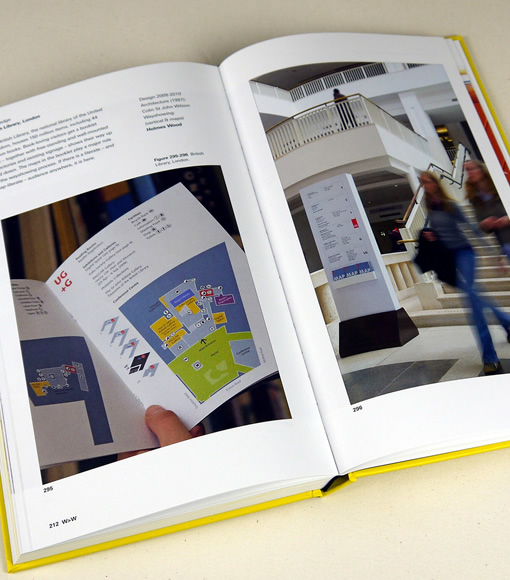
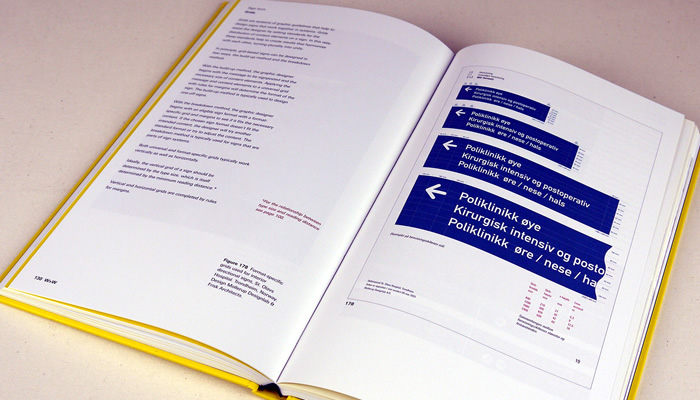
Cases
About one third of the book is reserved for principles applied in practice. A showcase of best-practice design in six categories ranging from Airports, Rail, City, Knowledge, Culture and Outdoor. The cases include (traditional) static sign systems— as well as digital wayfinding examples.
The projects are by design studios from around the world— and give insight on how wayfinding strategies are applied for designing clear, concise and informative environments.
Conclusion
If you have any interest in designing and planning for the build environment/public space— this is the book for you! I believe the content of W>W is relevant for designers, EGD designer, urban planners, architects, engineers, teachers, students, clients and many more. As the physical and digital environments move close towards each other, applying a wayfinding strategy is applicable for offline/online marketing, communication and information distribution.
Overall the book is a learning book to understand how people experience and navigate in Terra Incognita. The chapters are accessible and with many steps/examples you can implement strategies in your own thinking for developing wayfinding.
If you already own Wayshowing 2005, you might want to consider updating to W>W. The new edition offers enough new content, principles and practices to learn from.
The case studies are fresh, and inspiring which, creates a visual interpretation of the wayfinding strategies as describes in the W>W book.
Availability W>W
Wayshowing > Wayfinding is limited available, see the link below to obtain a copy.
Information
- Publisher: Bis Publishers
- Language: English
- ISBN: 978-90-6369-323-7
- Hardcover, paperback, Pages: 240